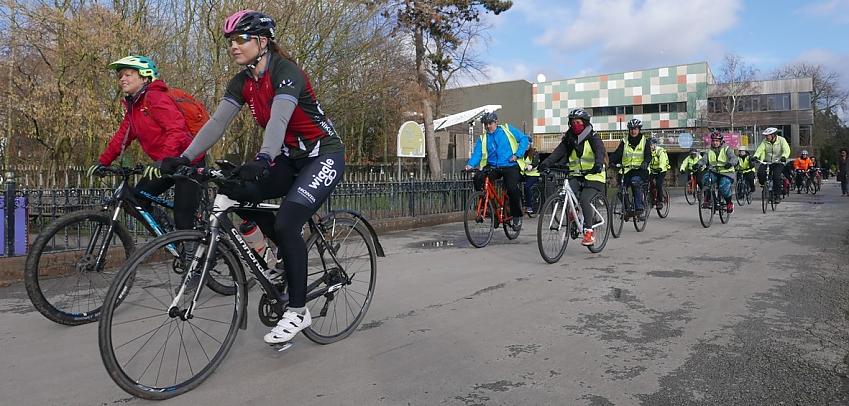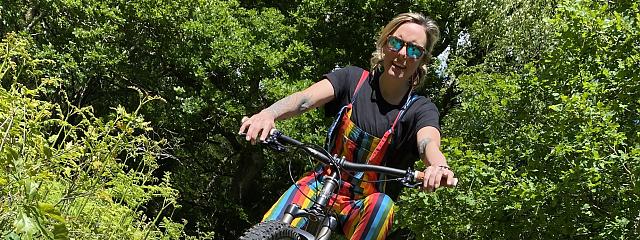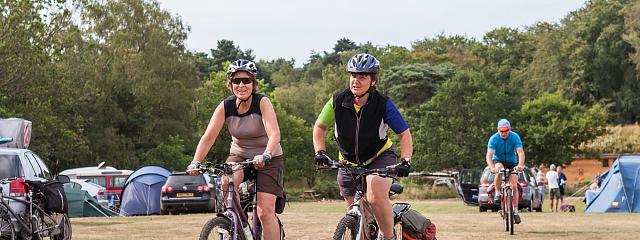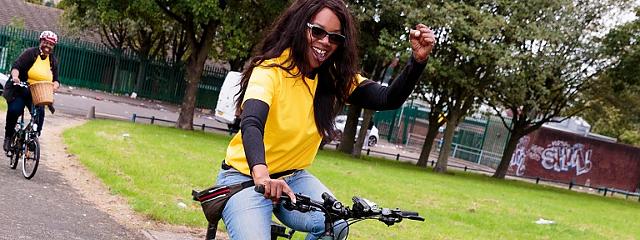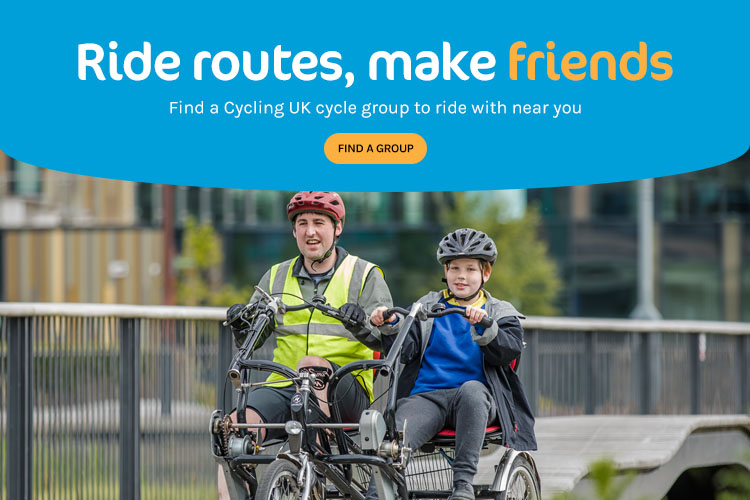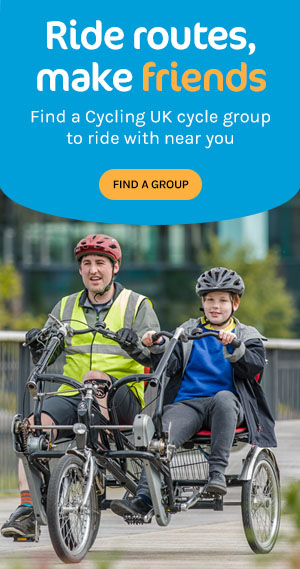
How to make your cycling group more inclusive
How to make your cycling group more inclusive
What is inclusion?
We hear a lot about equality (or equity), diversity and inclusion (EDI). But what do these terms actually mean? According to Inclusive Employers, an organisation “trying to make inclusion an everyday reality”, diversity is about valuing who we are – how we identity ourselves as people, whether that is our nationality, culture, religion, ethnic origin, sexual orientation, beliefs or any other specific characteristic – and the differences between us.
In the context of EDI, equality is concerned with trying to make a fairer society so that everybody feels able to participate, while equity is about removing the barriers that prevent people from participating equally. Inclusion, on the other hand, could be defined as “the policy or practice of making sure that everyone in society has access to resources and opportunities”. In other words, it’s about everybody and how we make other people feel.
Why it matters
You might wonder why it’s important to be proactive when it comes to inclusion. Surely all groups are open and friendly and, as long as you have a roadworthy bike, you’ll be welcome to join, so why make a fuss about it? This is largely true but, nevertheless, many people can find it intimidating to join in with new activities or groups they are not familiar with, particularly when they don’t see people who look or sound like them.
Even with groups specifically catering to one of their ‘differences’ such as gender, sexual orientation or ability, they may feel they don’t belong because of another, separate difference such as age, religion, belief, or their ethnic or even linguistic and socio-economic background. This is known as ‘intersectionality’.
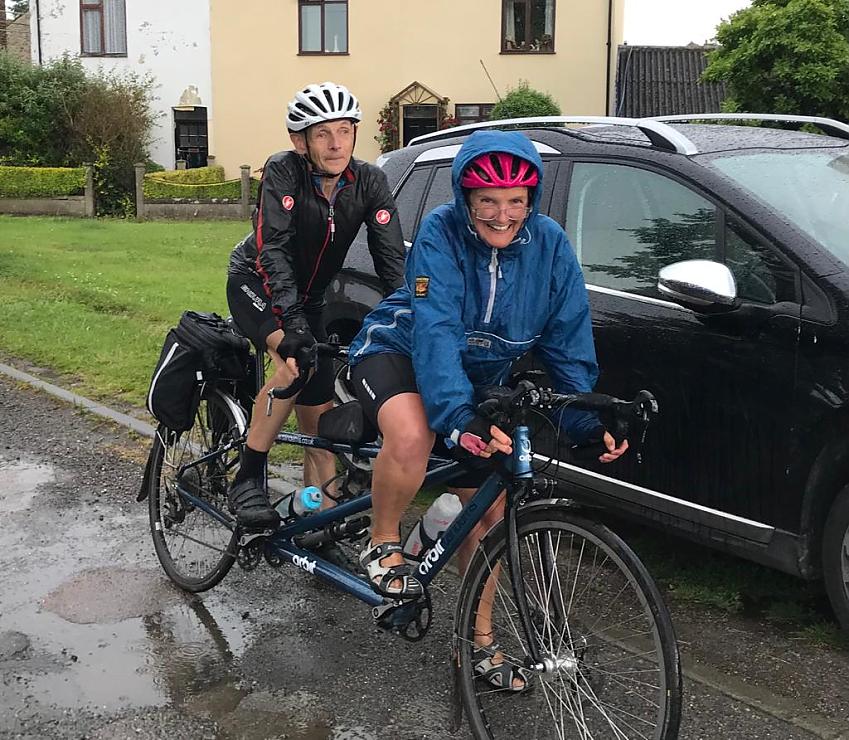
A brighter future
One of the best things about cycling is that it is an activity that almost everybody can enjoy. With more people cycling, it will become more mainstream and be more attractive to everybody. Groups that make an effort to be really inclusive are more interesting to ride with, retaining existing members and attracting new ones.
Steve Bateman, who is equity, diversity and inclusion officer for Cycling UK member group CTC Lancaster and South Lakes, says: “As a visually impaired tandem stoker, I am appreciative of all our members who ride the front of my tandems, which facilitates my sporting and social inclusion. Visually impaired people from all over the country struggle to find front riders so are facing increased social and sporting isolation and all that involves.”
We have a short, regular Tuesday morning ride to a named café which those who aren’t able to cycle to can get to by other means to enjoy the social aspects of the club
Steve Bateman, equity, diversity and inclusion officer, CTC Lancaster and South Lakes
He adds: “We also try to support our members who have conditions such as dementia, or are recently bereaved, by including them wherever practical. We have a short, regular Tuesday morning ride to a named café which those who aren’t able to cycle to can get to by other means to enjoy the social aspects of the club.”
The right thing to do
Ruby from Glasgow comments: “I like that the group I’m in isn’t a ‘women-only group’ but is ‘women led, all welcome, social and friendly pace’. It’s mainly women and non-binary people who come along, but men aren’t excluded. Usually it’s 90% women and the men there are respectful. It’s not all about who can go the fastest and so on.”
However, being more inclusive is not just about helping your group to be more sustainable, it’s also the right thing to do to bring about a fairer society.
Be kind
Above all, be kind. All of us, no matter what our external appearance might lead you to believe, can suffer from a hidden disability or a mental health issue such as anxiety or a lack of confidence, or be affected by major life events such as grief, illness or economic hardship.
Try not to judge others and give praise and thanks when they’re due – without being patronising – rather than criticism. If somebody’s behaviour or kit is not acceptable, try to give constructive pointers, rather than calling them out in front of others.
Alex Cuppleditch, head of volunteering and EDI lead at Cycling UK, says: “Inclusion is about being valued, heard, understood and accepted. The best way to achieve this is to interact, build positive relationships with each other and listen to each other’s experience and perspective without judgement.”
She adds: “Taking part in physical activity with other people in, for example, cycling groups can be a catalyst for change - sharing a passion breaks down barriers and gives us a connection that exceeds the superficial differences between us.”
Get involved
We will also be offering EDI training to our member groups in the near future so look out for that, and also see how we’re working in partnership with other organisations in the sustainable transport sphere to explore EDI further.
Top tips for creating an inclusive group
Many groups pride themselves on being inclusive but what does this mean in real terms? Put simply, it means making sure everybody feels valued and heard, whatever their identities. It means respecting the differences between us, rather than drawing unnecessary attention to them. It also means addressing any other factors that might cause people to feel excluded or uncomfortable on your rides.
We are all human and not perfect so we won’t get it right all the time, but here are some top tips for trying to ensure people feel as welcomed as possible within your group.
- When new people come along to your rides, make sure you greet them and learn their name. If you haven’t come across that name before, make sure you learn how to pronounce it correctly and ask them to say it phonetically if necessary. Respect the pronouns they wish to be addressed by
- Ask about any special requirements or concerns, for example relevant health issues, if they wish to share these privately with the ride leader or event organiser
- If you are unsure of anything, such as how a particular cultural difference could affect their riding, don’t be afraid to ask
- Make adaptations where possible or advise of alternative groups they could join if not; for example, Coventry CTC applied for funding for a signer/interpreter to ensure deaf and hard of hearing riders could participate in its AGM. Carol Lee said: “I came to take it for granted that there will always be situations where I don’t really feel welcome – until I started cycling and found the attitude of cycling groups, especially Coventry CTC, very open minded and welcoming. So much so that I’m amazed, humbled and so grateful. I can’t thank these people enough”
- Try not to judge others and give praise and thanks when they’re due – without being patronising. Rather criticising, if somebody’s behaviour or kit is not acceptable, try and give constructive pointers, rather than calling them out in front of others
- Be mindful of the language you use and think carefully about potentially hurtful ‘banter’
- Avoid using jargon and think before you speak but don’t be afraid to be open and honest if you get it wrong. Ruby says: “Lots of people use the word ‘folk’ to be inclusive of everyone”
- If you have capacity, put on a wide range of rides and activities to appeal to the largest number of riders. Be clear on bail-out options and café stops – it could be particularly important for women on their period or older people who need to know there will be toilets! Newcomers, as well as the more experienced riders, also really appreciate giving a clear idea of route and what to expect for that specific ride. Our Ride Leader Toolkit sets out more tips
- Avoid ‘microagressions’. These could include:
- asking people ‘where they’re really from’ or deliberately misgendering them
- assuming they wouldn’t be interested in a particular activity like mountain biking because of their age or gender
- assuming that people of different body shapes and sizes might be more or less fit than you – these could be called ‘unconscious biases’ and we all have them
- Celebrate differences. There are many ways of recognising other people’s cultures by, for example, learning about Ramadan and any issues around it that might affect Muslim riders
- Be flexible around people’s clothing and equipment, as long as they are safe for cycling. Groups that are successful in attracting new riders also make it clear what to bring and that people can help with mechanicals and so on
- Make it easy to find out where and when and how your rides and events are taking place. Think about people with neurodiversity issues who might find it hard to navigate an app or website where the details are hidden away, or even worse, are circulated on private WhatsApp groups or similar, making it harder to feel included. In contrast, we all love it when we actually receive a personal invite to something, whether it’s in writing or online
- Be confident to challenge unacceptable behaviour or language. Call people in for a quiet word as to why they may have caused offence, rather than ‘having a go’ in public
- Get to know participants so they feel able to raise issues freely – build in regular social activities so friendships can bloom
- Raise the issue of inclusion with your club committee so you can engage with it at the highest level. Share this article with as many people as possible, and consider appointing an EDI officer to your group






